Hyundai i20 vs Suzuki Ignis – Which model is better for everyday use?
Everyday use, family trips or long-distance drives – here’s where the differences show.
Discover whether Hyundai i20 or Suzuki Ignis fits your lifestyle better.
Costs and Efficiency:
When it comes to price and running costs, the biggest differences usually appear. This is often where you see which car fits your budget better in the long run.
Suzuki Ignis has a somewhat advantage in terms of price – it starts at 15600 £, while the Hyundai i20 costs 17400 £. That’s a price difference of around 1792 £.
Fuel consumption also shows a difference: Suzuki Ignis manages with 4.90 L and is therefore minimal more efficient than the Hyundai i20 with 5.20 L. The difference is about 0.30 L per 100 km.
Engine and Performance:
Under the bonnet, it becomes clear which model is tuned for sportiness and which one takes the lead when you hit the accelerator.
When it comes to engine power, the Hyundai i20 has a to a small extent edge – offering 100 HP compared to 83 HP. That’s roughly 17 HP more horsepower.
In acceleration from 0 to 100 km/h, the Hyundai i20 is slightly quicker – completing the sprint in 11.10 s, while the Suzuki Ignis takes 12.70 s. That’s about 1.60 s faster.
In terms of top speed, the Hyundai i20 performs minimal better – reaching 183 km/h, while the Suzuki Ignis tops out at 165 km/h. The difference is around 18 km/h.
There’s also a difference in torque: Hyundai i20 pulls convincingly stronger with 200 Nm compared to 107 Nm. That’s about 93 Nm difference.
Space and Everyday Use:
Cabin size, boot volume and payload all play a role in everyday practicality. Here, comfort and flexibility make the difference.
Both vehicles offer seating for 5 people.
In curb weight, Suzuki Ignis is somewhat lighter – 935 kg compared to 1088 kg. The difference is around 153 kg.
In terms of boot space, the Hyundai i20 offers noticeable more room – 352 L compared to 267 L. That’s a difference of about 85 L.
In maximum load capacity, the Hyundai i20 performs barely noticeable better – up to 1165 L, which is about 65 L more than the Suzuki Ignis.
When it comes to payload, Hyundai i20 slightly takes the win – 472 kg compared to 395 kg. That’s a difference of about 77 kg.
Who wins the race?
The Hyundai i20 proves to be dominates this comparison and therefore becomes our DriveDuel Champion!
Hyundai i20 is the better all-rounder in this comparison.
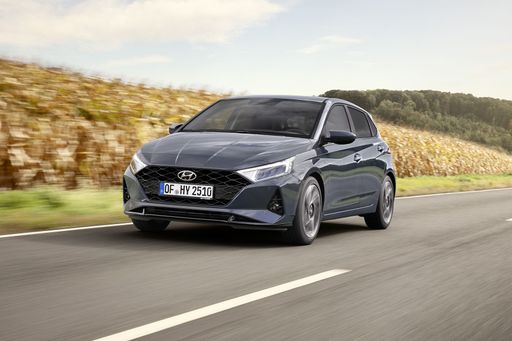
Hyundai i20
Hyundai i20
The Hyundai i20 impresses with its sleek design and modern aesthetics, making it a stylish choice in the compact car segment. Its interior is thoughtfully designed, offering comfort and advanced technology for a pleasurable driving experience. The vehicle also stands out with its efficient performance and agile handling, making city driving a breeze.
details @ hyundai.news
@ hyundai.news
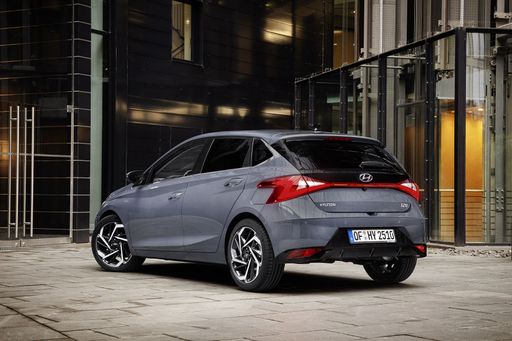 @ hyundai.news
@ hyundai.news
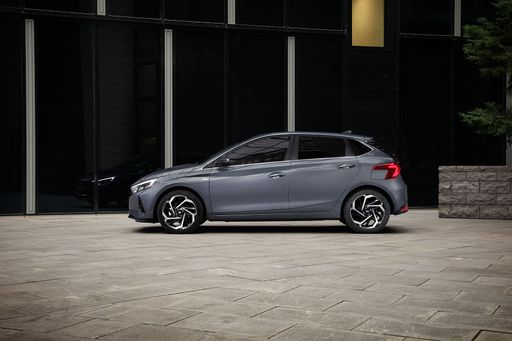 @ hyundai.news
@ hyundai.news
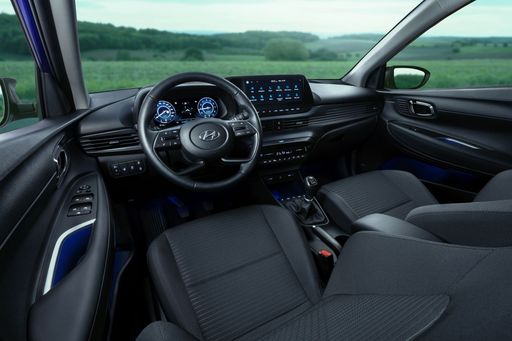 @ hyundai.news
@ hyundai.news
 @ hyundai.news
@ hyundai.news
Suzuki Ignis
The Suzuki Ignis is a compact car that stands out with its unique blend of small SUV aesthetics and city-friendly dimensions. Its playful and distinctive design, combined with a practical and elevated driving position, makes it an appealing choice for urban dwellers seeking versatility without compromising on style. Inside, the Ignis offers a surprisingly spacious cabin with innovative storage solutions, making it ideal for those who need a functional yet characterful vehicle.
details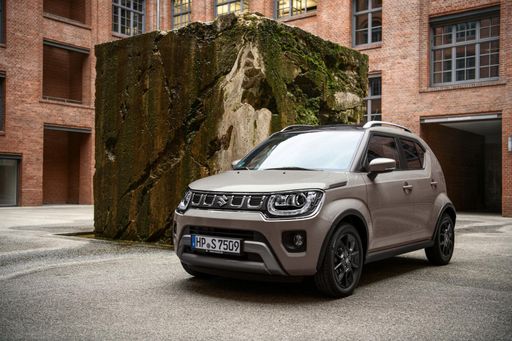 @ Suzuki
@ Suzuki
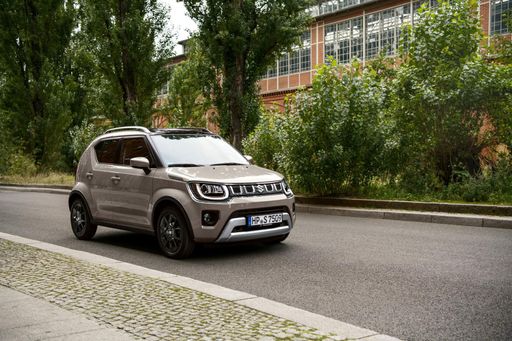 @ Suzuki
@ Suzuki
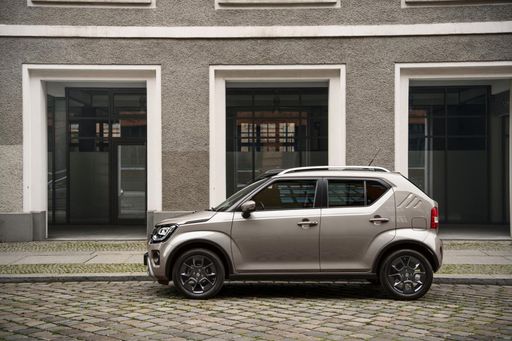 @ Suzuki
@ Suzuki
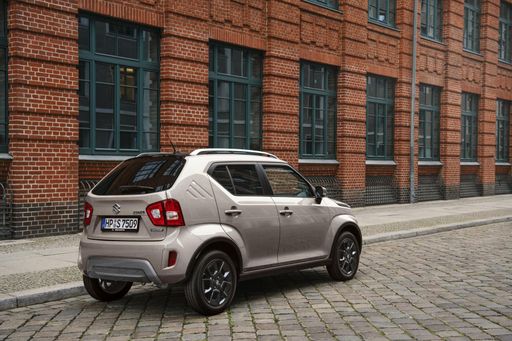 @ Suzuki
@ Suzuki
 @ Suzuki
@ Suzuki

|

|
|
|
|
Costs and Consumption |
|
|---|---|
|
Price
17400 - 24000 £
|
Price
15600 - 19500 £
|
|
Consumption L/100km
5.2 - 5.3 L
|
Consumption L/100km
4.9 - 5.4 L
|
|
Consumption kWh/100km
-
|
Consumption kWh/100km
-
|
|
Electric Range
-
|
Electric Range
-
|
|
Battery Capacity
-
|
Battery Capacity
-
|
|
co2
119 - 121 g/km
|
co2
110 - 122 g/km
|
|
Fuel tank capacity
40 L
|
Fuel tank capacity
30 - 32 L
|
Dimensions and Body |
|
|---|---|
|
Body Type
Hatchback
|
Body Type
SUV
|
|
Seats
5
|
Seats
4 - 5
|
|
Doors
5
|
Doors
5
|
|
Curb weight
1088 - 1190 kg
|
Curb weight
935 - 995 kg
|
|
Trunk capacity
352 L
|
Trunk capacity
204 - 267 L
|
|
Length
4065 - 4075 mm
|
Length
3700 mm
|
|
Width
1775 mm
|
Width
1690 mm
|
|
Height
1450 - 1455 mm
|
Height
1605 mm
|
|
Max trunk capacity
1165 L
|
Max trunk capacity
1086 - 1100 L
|
|
Payload
450 - 472 kg
|
Payload
335 - 395 kg
|
Engine and Performance |
|
|---|---|
|
Engine Type
Petrol
|
Engine Type
Petrol MHEV
|
|
Transmission
Automatic, Manuel
|
Transmission
Manuel, Automatic
|
|
Transmission Detail
Dual-Clutch Automatic, Manual Gearbox
|
Transmission Detail
Manual Gearbox, CVT
|
|
Drive Type
Front-Wheel Drive
|
Drive Type
Front-Wheel Drive, All-Wheel Drive
|
|
Power HP
79 - 100 HP
|
Power HP
83 HP
|
|
Acceleration 0-100km/h
11.1 - 13.7 s
|
Acceleration 0-100km/h
12.7 - 12.8 s
|
|
Max Speed
166 - 183 km/h
|
Max Speed
155 - 165 km/h
|
|
Torque
113 - 200 Nm
|
Torque
107 Nm
|
|
Number of Cylinders
3 - 4
|
Number of Cylinders
4
|
|
Power kW
58 - 74 kW
|
Power kW
61 kW
|
|
Engine capacity
998 - 1197 cm3
|
Engine capacity
1197 cm3
|
General |
|
|---|---|
|
Model Year
2024
|
Model Year
2020
|
|
CO2 Efficiency Class
D
|
CO2 Efficiency Class
C, D
|
|
Brand
Hyundai
|
Brand
Suzuki
|
What drivetrain options does the Hyundai i20 have?
The Hyundai i20 is offered with Front-Wheel Drive.
The prices and data displayed are estimates based on German list prices and may vary by country. This information is not legally binding.
